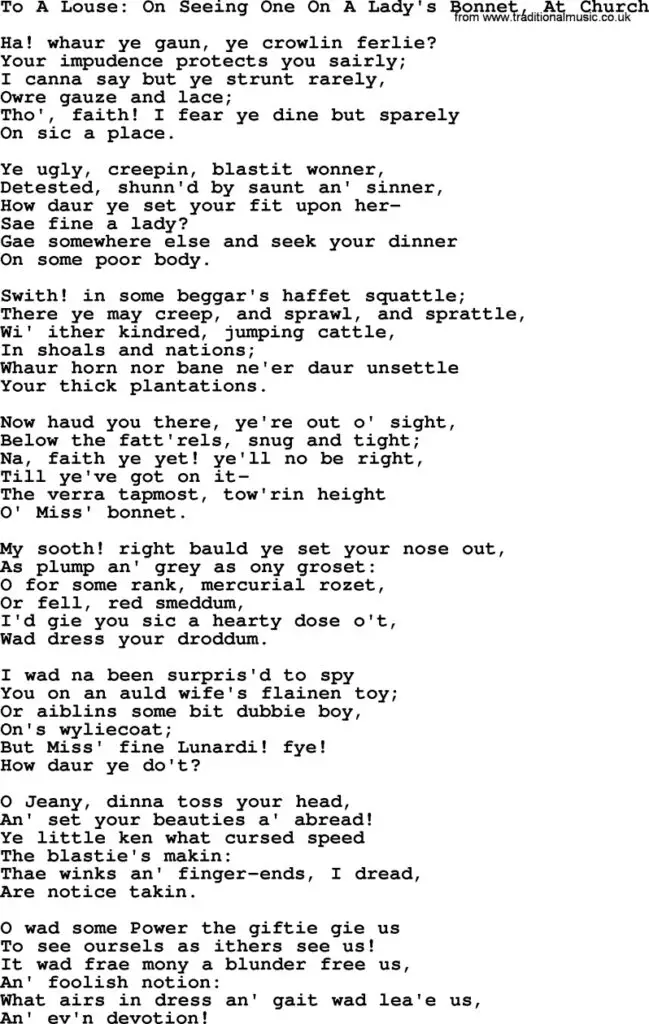Robert Burns, one of Scotland’s most beloved poets, was known for his sharp wit, emotional depth, and use of Scots dialect. He often wrote about love, nature, class, and human desires. One of his lesser-known but strikingly bold poems is “How Can I Keep My Maidenhead?” — a humorous and satirical piece written from the perspective of a young woman questioning how she can preserve her virginity in a world full of temptation.
Understanding the Title
The term “maidenhead” is an old-fashioned word for a woman’s virginity. The poem’s title poses a rhetorical question: How can a young woman possibly stay a virgin when surrounded by so many eager men? Though written by Burns, the poem adopts a female voice, which was not unusual for him — he often explored gender dynamics by writing dramatic monologues from different perspectives.
Summary of the Poem
Stanza 1: The Central Question
The poem opens with the central dilemma:
“How can I keep my maidenhead,
Among sae mony men, O?”
Here, the speaker laments how difficult it is to remain a virgin amidst a society filled with charming and persistent men. The tone is playful but also suggestive of the pressures placed on women.
Stanza 2: Rejection of Authority Figures
The speaker refers to a captain and a colonel — likely metaphors for men of high status or military power — but dismisses them:
“The captain bad, the colonel worse,
Wi’ them I’ll never fen, O.”
She implies that she doesn’t trust these men and refuses to give in to their advances, showing agency over her own body.
Stanza 3–4: Following Her Mother’s Example
She says she’ll do as her minnie (mother) did:
“My minnie did, my minnie did,
As I’ll do wi’ my maidenhead.”
Her mother apparently didn’t give her virginity away for free — she did it for “siller” (money). This reveals a pragmatic and even transactional view of sexuality.
Stanza 5: The Devaluation of Virginity
The speaker reflects on how virginity loses value with age:
“An auld moulie maidenhead,
The weary wark I ken, O.”
Here, “auld moulie” means old and moldy, suggesting that if she waits too long, her virginity will be worthless — so she might as well make the most of it while she can.
Stanza 6: Giving In, With Conditions
In the final stanza, she seems ready to give it up — but only to a “bonie lad” (a handsome young man):
“I’ll gie’t to a bonie lad,
For gude and a’ to ken, O.”
She will give her virginity to someone who brings her joy or benefit — not for love, not for free, but on her terms.

Themes
1. Female Agency and Sexuality
The most prominent theme is the speaker’s ownership of her body and choices. Though humorous, the poem challenges the idea of passive female sexuality.
2. Satire and Social Critique
Burns critiques the double standards and social pressures around virginity and marriage. The poem pokes fun at the idea that a woman should guard her chastity at all costs.
3. Time and Value
The speaker treats virginity like a perishable item — it has value only while she’s young. This reflects societal views of the time but is delivered through a cheeky, almost rebellious voice.
Language and Literary Devices
Scots Dialect
Burns uses Scots words like “siller” (money), “minnie” (mother), and “ken” (know), which give the poem a strong cultural identity.
Syncope
This rhetorical device involves omitting sounds or letters in words, often replaced with an apostrophe — like “o’t”, “for’t”, and “I’ll”. It contributes to the musical rhythm of the poem.
Alliteration
Repeated sounds are used for emphasis and rhythm:
“My minnie did, my minnie did”
Anaphora
The repetition of the same phrase at the beginning of successive lines:
“I’ll gie it to a bonie lad,
I’ll gie it to a bonie lad,”
Fragmentation
Each stanza takes a slightly different angle — from lamenting temptation, to rejecting suitors, to recalling her mother, and finally deciding for herself. This fragmented structure mirrors the speaker’s shifting thoughts.
Conclusion
“How Can I Keep My Maidenhead?” is not a solemn poem about purity but rather a satirical, witty take on female desire and societal expectations. Through the voice of a bold and clever young woman, Robert Burns exposes the absurdity of rigid moral standards while celebrating the power of choice.
Frequently Asked Questions
Q: Was Robert Burns a Scottish poet?
Yes, Robert Burns was a renowned Scottish poet, often called the national poet of Scotland.
Q: What language did he write in?
Burns wrote in both English and Scots, a dialect of the Scottish Lowlands.
Q: Why is Robert Burns important?
Burns is celebrated for preserving Scottish culture, language, and folk traditions through his poetry. His work resonates with themes of love, liberty, and human nature.